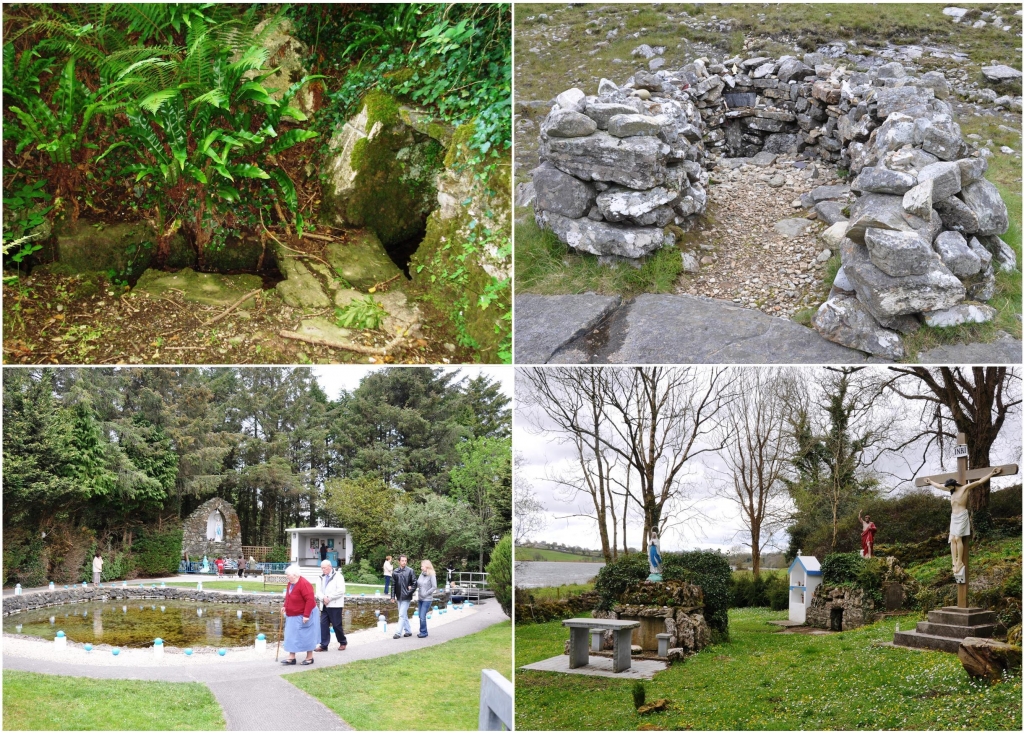The Holy Well and Holy Wells
While holy wells can be found across Ireland, each one as a unique character. The physical location, site features, number of visitors, votive offerings, origins, saintly or supernatural associations and numerous other elements all combine to make each spot distinct. To this we can add the context of the visit – the time (both in a day and seasonally), the purpose, whether we are alone or with others – and the meanings and emotions we, and others, bring to the site.
Ronan Foley (2011, p. 470) outlines how holy wells “range from literal holes in the ground to substantial landscaped sites with a mix of natural and culturally introduced elements. In general, the sites contain the wells themselves, streams, stone crosses and covers, paths, trees and bushes, altars and statues, all of which have physical form but wider symbolic meanings as well”. His description captures some of the variety that one finds materially at holy wells, while also hinting at how features combine to create each one.

A selection of holy wells (clockwise, from top left): Sunday’s Well, Raffeen, Cork, a simple well in the hillside that is frequented by a small number of locals; St Patrick’s Well Mam Éan, Connemara, a well on a mountain pass surrounded by a walled enclosure with a collection of votive offerings; St John’s Well, Newhall, Clare, an enclosed well with an altar, several statues and a shrine, the site is visited on June 23rd, St John’s Eve; ‘Tubrid’, Millstreet, Cork, an elaborate well-site with a Marion Grotto, an sheltered altar, railings and a landscaped environment, an annual mass is celebrated on a Friday in May.
While it makes sense for any study of holy wells to engage with them both collectively and individually, that process should remain conscious of the uniqueness of each site and how that affects and shapes our understandings.
Reference:
Foley, R. 2011. Performing Health in Place: The Holy Well as a Therapeutic Assemblage. Health & Place, 17, pp. 470-479.
